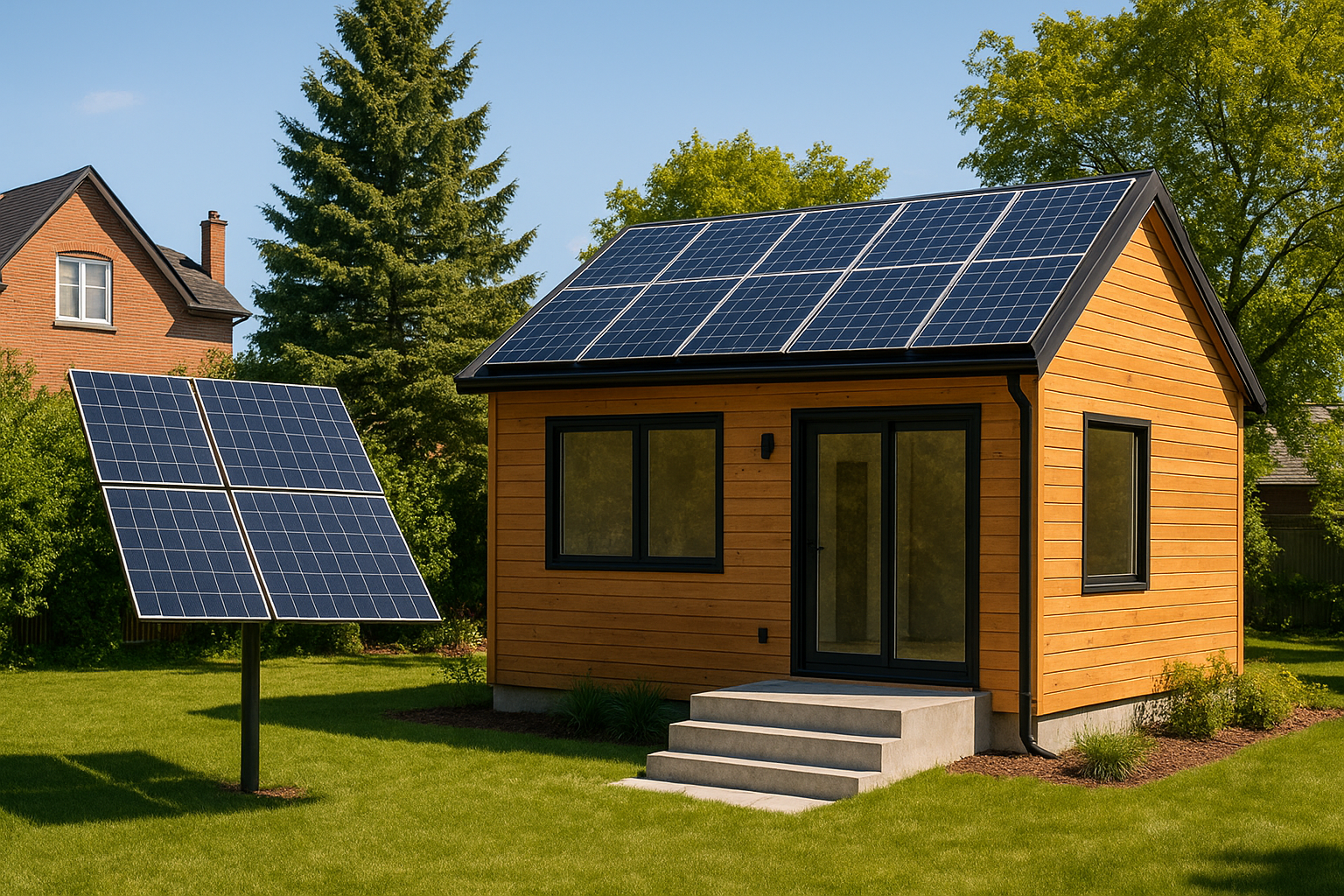
The Ultimate Guide to Solar-Powered ADUs for Canadian Homes
Estimated reading time: 7 minutes
Key Takeaways
- Sustainable Energy: Solar-powered ADUs harness renewable power, reducing reliance on traditional grids.
- Climate-Ready Design: Designed with Canada’s harsh winters in mind, these ADUs incorporate robust solar panels and battery storage.
- Financial Incentives: Available grants, rebates, and net metering options make these systems a cost-effective investment.
- Energy Independence: Off-grid options ensure uninterrupted power during grid outages and emergencies.
Table of Contents
Introduction
Solar-powered ADUs are revolutionizing the future of home design in Canada. These innovative units blend sustainability with modern living, empowering homeowners to achieve energy independence while reducing their carbon footprint. With dedicated solar panels and battery storage systems, Canadian homes can now explore off-grid energy solutions that are both efficient and environmentally friendly.
Understanding Solar-Powered ADUs: Energy Independence for Canadian Homes
A solar-powered ADU (Accessory Dwelling Unit) offers flexible living solutions by using a dedicated solar PV system. These units can serve as rental suites, private offices, guest houses, or multigenerational homes. By integrating renewable energy, homeowners can significantly reduce utility bills and enjoy standby power during emergencies.
Read more about the benefits of solar-powered ADUs here.
Designing Effective Solar Energy Systems for ADUs
Integrating solar panels within an ADU requires thoughtful planning. System sizing, panel placement, and battery storage are critical factors. Proper design ensures optimal performance throughout seasonal changes and maximizes energy generation, especially during short winter days.
Key considerations include:
- System Sizing: Calculate daily energy needs for appliances, heating, and lighting.
- Panel Placement: Secure optimal roof orientation and angle to capture maximum sunlight.
- Battery Storage: Choose between lithium and lead-acid batteries based on energy demands and longevity.
Learn more on effective design techniques here.
Exploring Off-Grid Energy Options
Off-grid solar systems empower you to manage your own electricity without relying on traditional utility networks. Typical components include solar panels, batteries, inverters, and charge controllers. This comprehensive setup ensures that your ADU remains functional even during widespread outages.
For an in-depth look, visit this resource.
Financing Solar-Powered ADUs in Canada
Despite the upfront costs, the long-term savings and numerous financial incentives make solar-powered ADUs a wise investment. Homeowners can benefit from federal and provincial grants, net metering programs, and other incentive schemes designed to reduce the overall costs.
Discover detailed financing options here.
Installation Process & Best Practices
A successful installation process begins with securing the necessary permits and consulting professional installers. From assessing the roof’s suitability to choosing durable materials for extreme weather, following best practices is paramount to long-term performance and safety.
Steps include:
- Permitting: Ensure compliance with local building and safety codes.
- System Assessment: Evaluate energy needs, roof angle, and shading factors.
- Component Installation: Securely mount panels and properly install batteries and inverters.
For more insights, check out this guide.
Benefits for Canadian Homes
Solar-powered ADUs provide a myriad of advantages. They not only lower carbon footprints but also ensure financial savings through reduced utility bills and increased property value. These ADUs support a resilient lifestyle, especially in remote areas and during power outages.
Enhance your sustainability while enjoying improved energy security.
Conclusion
Investing in a solar-powered ADU is a step towards a greener, more energy-independent future for Canadian homeowners. By blending cutting-edge solar technology with thoughtful design and robust installation practices, these ADUs offer lasting environmental and financial benefits.
Key Takeaways Recap:
- Solar-powered ADUs harness renewable energy for efficient, off-grid living.
- Design, financing, and installation are critical to maximizing benefits.
- Available incentives help lower initial costs and ensure long-term savings.
- These ADUs are built to thrive in Canada’s unique climate conditions.
Ready to embrace the future of sustainable living? Explore the potential of solar-powered ADUs and join the movement towards energy independence in Canada.
Frequently Asked Questions
Q1: What is a solar-powered ADU?
A: A solar-powered ADU is an accessory dwelling unit that uses solar panels and battery storage to generate its own electricity, offering off-grid energy independence and sustainability.
Q2: How does off-grid energy benefit Canadian homeowners?
A: Off-grid systems provide continuous power during grid outages and reduce dependence on utility companies, which is especially beneficial during harsh Canadian winters.
Q3: Are there financial incentives available for installing solar-powered ADUs?
A: Yes, Canadian homeowners can take advantage of federal and provincial grants, rebates, and net metering programs that help offset the initial costs of solar installations.

Leave a Reply